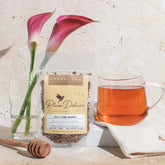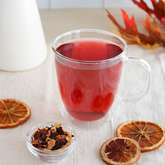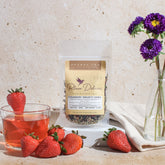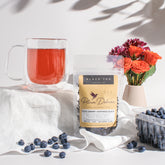
What is Focaccia?
Focaccia is an Italian flatbread made from a sturdy, simple dough just like the one for pizza crust: flour, salt, water, yeast, and olive oil. Every ancient culture has some type of flatbread, such as tortillas and pita. Focaccia flatbread was originally cooked in the ashes of a burned down fire in a wood-burning oven. In ancient Rome, focus meant hearth. The bread was called panis focacius, then focacia, and now focaccia in modern Italian. It is also known as pizza bread. In Sicily it is a street food and eaten out of hand while walking.
What emerges from the oven, hot and savory, is a beautiful, rustic flatbread. It is ready to be served immediately, cut with a serrated knife or kitchen shears, for an appetizer sliced into thick fingers or uneven pieces to serve with your soups or stews. Foccacia can be sliced horizontally into two flat pieces for sandwiches and burgers. It is also an excellent base for layering raw ingredients after baking to make a portable salad. With fruit, it is a breakfast treat instead of muffins or croissants. Some of the heavier toppings, such as beans, make a great lunch instead of a sandwich.
What are the Toppings for Focaccia?
Less is more when it comes to focaccia. Think of an easier pizza. The toppings for the Italian flatbread are close to infinite depending on available pantry ingredients, seasonal fresh ingredients, and condiments like olives and sundried tomatoes. The instant basics include a choice of coarse sea salt, fresh or dried herbs, onions, melting cheeses, fresh and dried fruits, and vegetables. There is even a chocolate version. But less is more when it comes to the toppings. Simple olive oil and sea salt is fantastic.
"Clean,” healthy eating is fast becoming the nutritional adjective du jour, so look for whole unprocessed ingredients high in nutrients but low in saturated fat and sugar. You can use any combination of ingredients that you want, but it is important to have the right ones: nothing too goopy, and never too much. This is not pizza.
First, the dough is moistened with some oil. It is okay that the oil pools into the indentations; don't worry, it will soak into the dough during the baking. Then a bit of vegetables or nuts for flavor and color, then cheese if you like. It is a balance of layering the ingredients.
How to Make an Easy Foccacia Dough
Sometimes you want fresh bread, but don't have the time, or the inclination, to make it from scratch. So this is your opportunity to use commercially made Ready-Dough packaged by Bridgeford or Rhodes, easily found in the supermarket freezer department. Using the three 1-pound loaves that come in one package -- one loaf for each focaccia -- you can make the best flatbread. You can also use a package of 12 dinner rolls or 8 Texas Rolls, both of which equal a loaf when rolled out flat.
Sometimes, through mishandling at the grocery store, dough is allowed to partially thaw and is then refrozen. Re-freezing damages the yeast. When purchasing, select dough that is frozen solid, not stuck together, and devoid of ice crystals in the bag. Also check the "Best By [Date]" on the package. For best performance, select a package with a distant expiration date.
How to Defrost Frozen Dough: We've talked about frozen bread dough before. Defrost the dough on the kitchen counter in the package, about 5 to 7 hours (too long and it will warm up and over rise) until room temperature and pliable, or overnight in the refrigerator. Rolls only take 3 to 4 hours to defrost. Be sure to leave it in the bag or else the dough will dry out and develop a thick skin. If you can't prepare the flatbreads right away, leave the package of dough in the refrigerator for a few hours until you are ready. Microwave thawing bread dough is not recommend; loaves defrosted in the microwave do not thaw evenly. You can keep the dough in your refrigerator up to 48 hours, but DO NOT re-freeze thawed dough.
Baking the Foccacia: Use a metal baking sheet with a shallow 1/2-inch sloping edge. Sprinkle with cornmeal, and then take one section of dough, pressing it into an even, flat oval on the pan. After letting it rest 10 to 15 minutes, use your fingers to dimple the slightly puffy dough and sprinkle on the toppings. The baking sheet works great by itself on the oven rack, but if you have a ceramic pizza stone, you can preheat that in the oven and place the baking sheet on it.
DIY Focaccia
One focaccia bread serves 4
Ingredients:
- 1 loaf (1 pound) frozen bread dough, thawed in the refrigerator 12 to 24 hours, or at room temperature 5 to 7 hours
- 2 tablespoons yellow cornmeal or farina breakfast cereal, for sprinkling
- 2 tablespoons olive oil of choice
- Topping of choice (following)
Preparation:
Preheat the oven to 375º (if using a convection oven, decrease the temperature by 25º). Sprinkle a large baking sheet heavily with cornmeal or farina. Set aside.
Spray counter lightly with non-stick olive oil cooking spray. Do not use flour as it tends to dry out the dough and causes the dough to lose its elasticity. Starting from the center, roll the loaf or combined rolls into a 10x14-inch rectangle. When rolling out the dough, if it keeps shrinking back, cover with sprayed plastic wrap, let rest for 10 minutes to relax the dough, and try again.
Place the dough on the pan and, using floured fingers, press and push to make an evenly flat loaf about 10-x-8-inches, leaving a 1 1/2-inch border. Let rest a few minutes, then press again to stretch the dough a bit further. As you are doing so, spread your fingers out and make finger holes all the way through the dough. Cover dough with a clean dish towel and let rest 10 to 15 minutes at room temperature (double the time if your dough was refrigerated and still cold). You can spray the surface of the towel with some nonstick olive oil to prevent sticking if you wish.
Assemble the topping ingredients while the dough is resting. If the dough rises too high (bakers would say over-proofed), don’t worry. Just "punch" the dough down by pressing with the heel of your hand, or dimple the dough with the tips of your fingers and reshape; it will rise again. Some people feel the texture is even better using this procedure and they do this on purpose.
Using your fingertips, press into the dough to make dimples. Drizzle with oil, arrange the topping, and sprinkle with cheese or coarse salt, if using. If making a plain focaccia, sprinkle the top with coarse salt and drizzle with more oil.
Immediately place in the center/lower third of the preheated oven and bake for 20 to 30 minutes, until puffed and golden brown. If you like it darker and crunchier on the outside, bake for the longer time. Let cool in pan on a wire rack for at least 15 minutes. Cut with a serrated knife or kitchen shears and serve warm or room temperature.
The world's your oyster when it comes to toppings to explore. Some ideas to get you started:
- spinach and black bean
- pesto (try this one or these)
- bacon, lettuce, tomato
- fig mascarpone
- chocolate
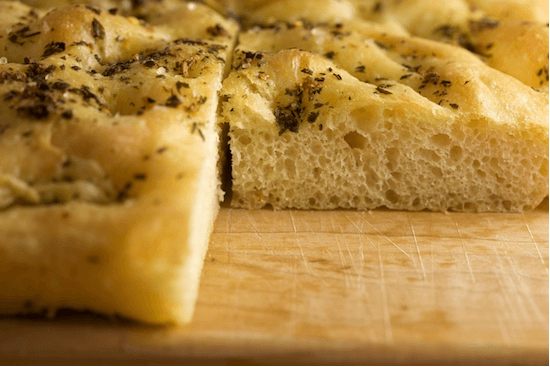
![Snow Day Sips Winter Tea Variety Pack [6-Pack of Flavors]](http://www.plumdeluxe.com/cdn/shop/files/holidayTeaVarietyPack_3.png?v=1766043158&width=165)
![Winter Tea Variety Pack [6-Pack Variety of Flavors]](http://www.plumdeluxe.com/cdn/shop/files/2.03-1080x1080-PlumDeluxe-IT-205020.png?v=1762440068&width=165)


